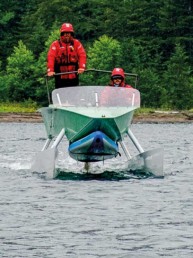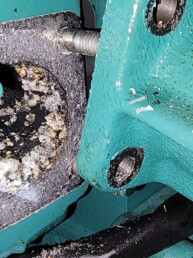When the need for a new dinghy arises, a reluctant boat builder goes to work
“I’m going to start building a wooden boat this weekend,” I told a colleague one Friday last December. It was casual workplace chit-chat, but deep inside I felt like a fraud. I’m an avid sailor and routine maintenance guy, but I’ve never been infected with the desire to construct a boat — in this case, a dinghy. Instead, I’ve always followed my mentor Tim’s advice: “Build for buildings sake; otherwise, buy what you need and make it your own.”
This mantra worked well for me until last summer when my wife, Kate, joined me aboard Luna, our 19-foot catboat, for her first extended cruise. Admittedly, cruising in Luna is more like camping in a Volkswagen bus than sleeping on a yacht, but the boat meets our values of living small and has a charming lapstrake hull. The “dinghy” we brought along, however, was the opposite of charming: a neon-orange plastic sit-on-top kayak, it was unsinkable, but a wet ride and decidedly un-salty. Maybe, Kate suggested, for the next cruise we should find a proper dinghy?
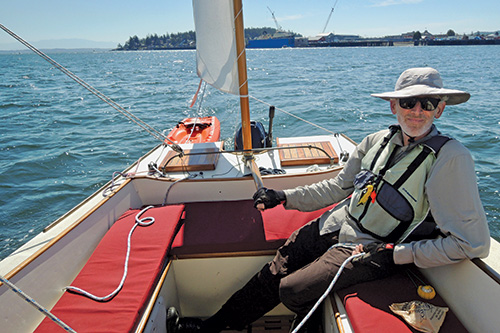
My challenge? I couldn’t find what I wanted in the classifieds: an ultralight, tiny dinghy suitable for our diminutive cruiser. I yearned for a design that was cute, docile, functional for two adults, and wouldn’t easily slip beneath the waves if swamped. It seemed absurd to pay someone to build such a small boat for us, yet I possessed neither the desire nor the skills to construct one… or so I told myself.
Still, the idea nagged at me. One night at dinner, I unexpectedly found myself making the case to Kate for my own expertise. I’d cut wood many times, and used fiberglass and epoxy to repair and reinforce. And, decades of home and boat ownership had required an endless stream of painting and varnishing projects, providing me with all the skills required in that department.
Yes, I could probably build a little dinghy. The difficulty came in setting my mind to do it. Why use precious time sawing when I could be out adventuring? What if I started and never finished? Wouldn’t it be better to leave the hard work to some tinkerer who was better at it — and actually enjoyed it? Kate, who believed I had too much on my plate already, heartily endorsed this position.
Nevertheless, I continued exploring the possibilities, evaluating designs ranging from a willow-bough coracle to a wheelbarrow-like plywood dinghy with an integrated wheel in the bow that used oars as the “handles” to push it overland. In the end, I favored an 8-foot plywood pram sold as a kit from a local outfit. When they announced a holiday sale, I jumped at the opportunity to make the purchase. Not only would I get exactly what I wanted, but now there would be no backing out.
A few weeks later, a 7-foot-long crate arrived on my porch. I hauled the raw components of my dinghy to the century-old garage of my friend Dennis, which he had kindly offered as a workspace, along with himself as building partner.
We unpacked the crate, inspecting each pre-cut piece, turning them around, and trying to determine where exactly each was supposed to go. I was reminded of the balsa wood model airplane kits I put together as a kid; only with this vessel, I would actually be able to climb aboard and sail away (or at least to shore).
The construction involved a stitch and glue technique. We would “stitch” the dinghy’s pieces together with zip ties, at least 150 of them. Next, we’d carefully apply glue in the form of epoxy to each seam. Then we would remove those legions of zip ties. Over the following weeks, layers of epoxy and fiberglass would be applied to strengthen the seams.
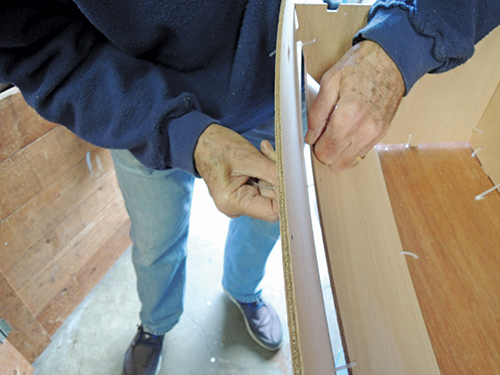
By the third session, the long pieces of flimsy plywood we’d pulled from that crate had started to resemble a boat-shaped object, albeit one with innumerable tiny holes and gaps between the planks. Still, it was exciting to see the shape and length emerge.
By the fourth session, a rhythm had been established. Dennis enjoyed pumping and mixing the epoxy and improvising or trying out new techniques. I was keen to follow the building manual to a T, while also appreciating his enthusiasm. When we finally began filling those legions of holes, we entered a trance-like state. I took the lead, dabbing thickened epoxy into each opening and crack, working in a fashion that I hoped was thorough and methodical. Dennis followed behind, cleaning up the overflows. It felt like performing nautical yoga: bend, reach, dip, fill, shift. We circled the boat over and over, each time finding holes we’d missed. A second batch of epoxy was stirred up and we repeated our strange exercise until no openings remained.
As with any project, problems popped up. We ran out of epoxy; the plans weren’t perfect, so we guessed about a few steps; the fiberglass turned out lumpy; and a few small mistakes meant work had to be undone. Yet despite these setbacks, I came to value the story, the intimacy of truly knowing this boat. I had touched every surface; I knew which parts were perfect, and which ones had been enhanced with a hidden fillet, or sanded into submission.
As the final pieces came together, each problem solved or decision made provided a greater sense of ownership in the dinghy. Whether adding inspection ports, deviating from the plans in our construction methods, or selecting a custom paint scheme, this constellation of actions and choices made the dinghy feel like something I had actually created, not simply constructed from a kit. As I looked at the nearly finished boat, I realized that, while I hadn’t built for building’s sake, I had made something that was truly my own. All it needs now is some paint, and then I can start on the oars.
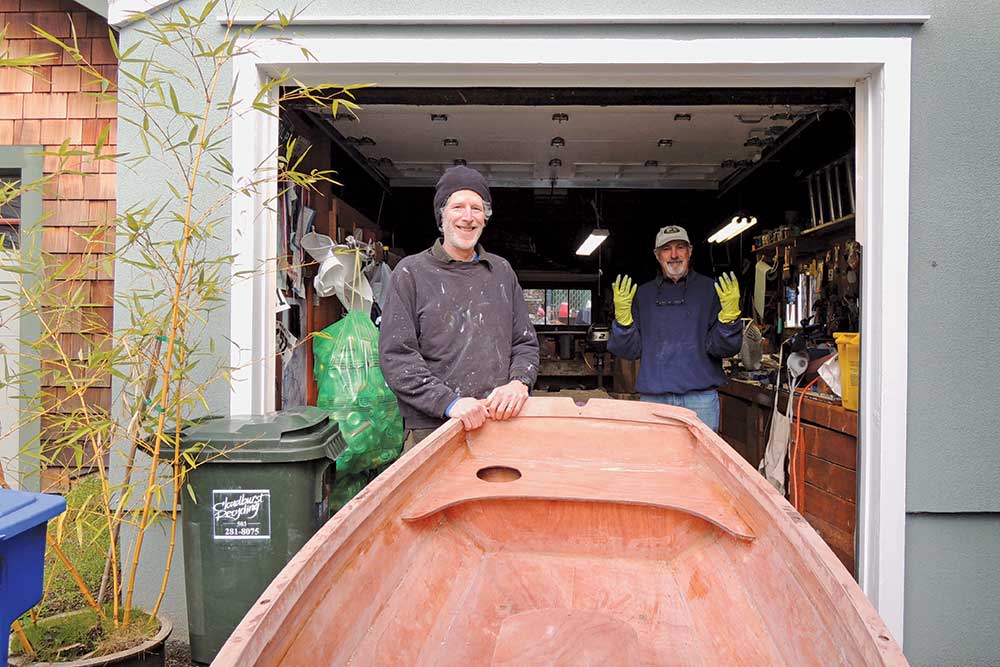
Bruce Bateau sails and rows traditional boats with a modern twist in Portland, Oregon. His stories and adventures can be found at www.terrapintales.wordpress.com.
Bruce Bateau
Bruce Bateau sails and rows traditional boats with a modern twist in Portland, Ore. His stories and adventures can be found at www.terrapintales.wordpress.com



